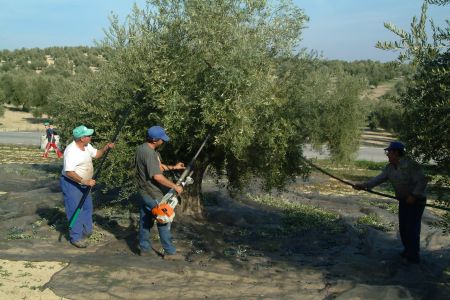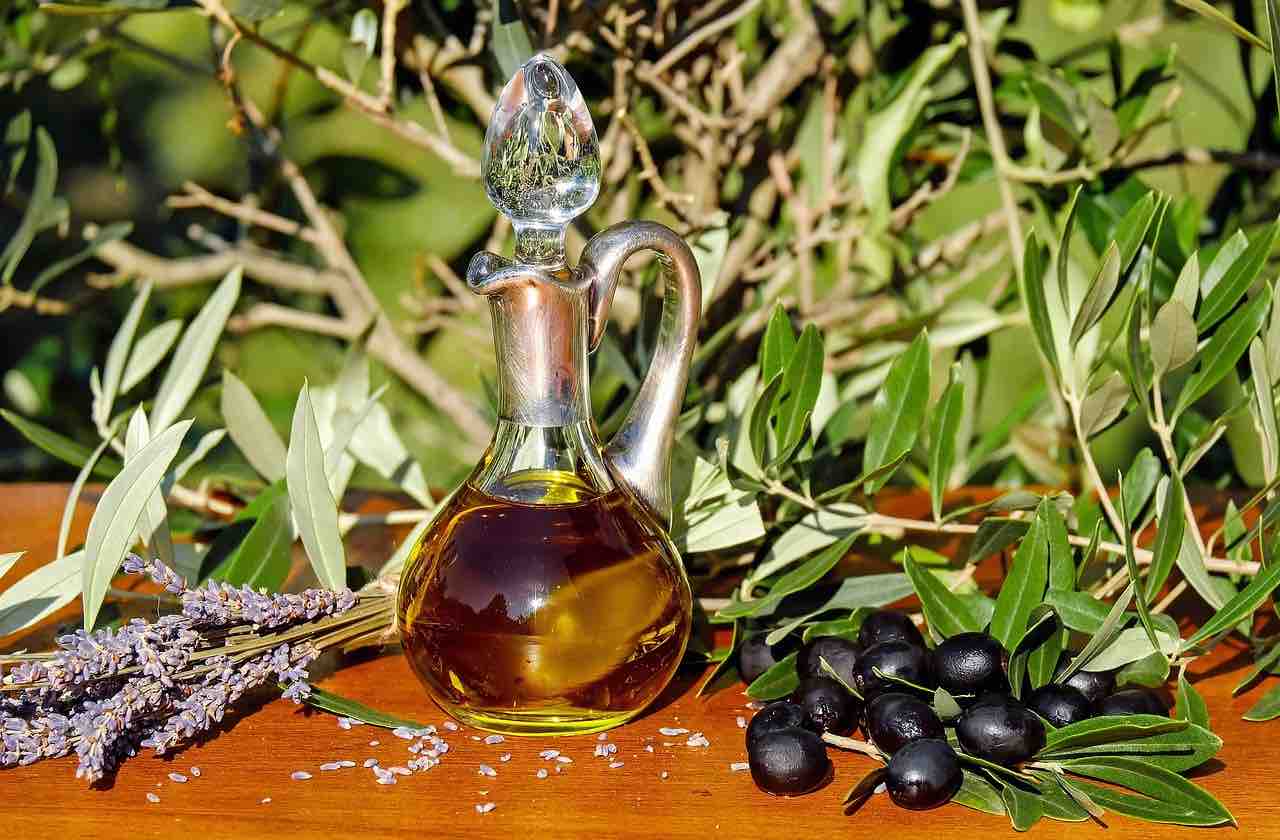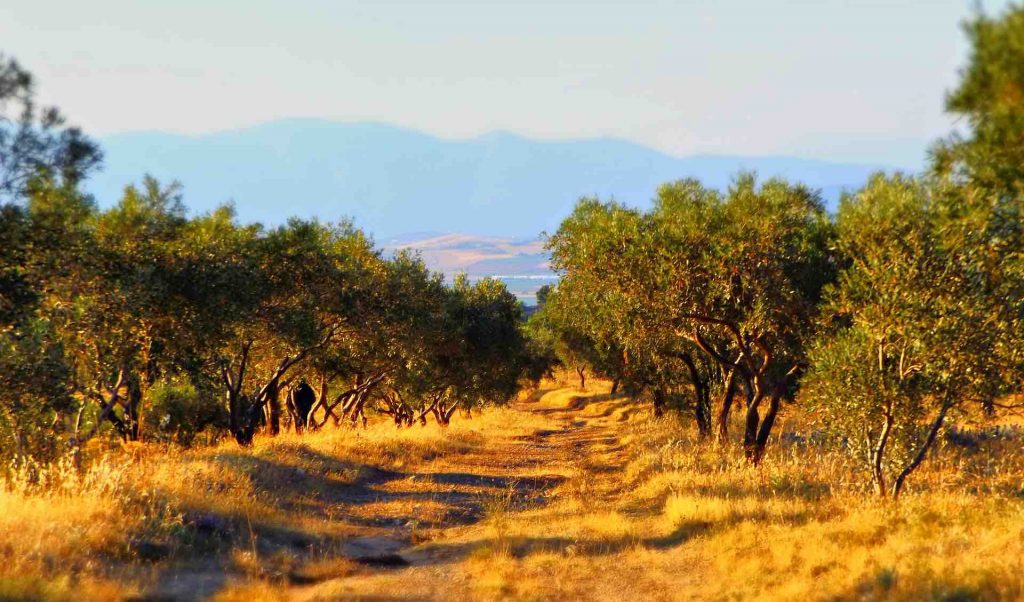“Curious as to how to make olive oil, and the different olive oil types? Then read on …
It was ancient Greek Homer (and not Bart Simpson’s father!), who first called beautiful olive oil “liquid gold”.
As with fine wine, good olive oil can only be produced by using quality fruit …
… And Spain cultivates more olives than any other country in the World.
What’s more, the variety and standard are absolutely superb.
No wonder Spanish extra virgin olive oil is the gourmet’s number one choice.
So, how many olives does it take to make olive oil?…
… Well, you’ll need around 4-5 kilos of olives to produce just one litre of oil.
And, what’s the difference between black and green olives?…
… The color of the olive depends purely on how ripe the fruit is. When it first appears on the tree during summer months, the fruit is a succulent green, turning velvety black as it ripens.
HOW TO MAKE OLIVE OIL – HARVESTING
In Spain, harvesting normally takes place round about November.
Using traditional methods, this will be done by hitting the olive branches with long sticks, thereby forcing the ripe fruit to tumble onto nets spread on the ground beneath the tree.
Alternatively, mechanical vibrations can be used.

processing olive oil
After harvesting, olives must be taken to the mill for processing as quickly as possible – preferably within 24 hours. Leaves and twigs are removed, the fruit washed, then the olives – pits included – are ground into a paste … either using huge millstones, or by mechanical means.
They’re now ready for pressing, using either the traditional method or centrifuge.
traditional methods
With traditional methods, the paste is spread onto circular mats and entered into a press, which pushes out the juice, leaving the “pomace” behind.
At this point, the juice is a mixture of oil and fruit water, so it’s now left to stand for an hour, during which time the oil and water will naturally separate.
The oil is then siphoned off to another vat where any particles will drift to the bottom, enabling the pure olive oil to be decanted into bottles without the need for filtering of any sort.
centrifuge method
A more modern method of pressing is by centrifuge – first on a horizontal centrifugal machine to separate the juice from the pomace, then on a vertical machine to separate the oil from the juice water.
HOW TO MAKE OLIVE OIL – OLIVE OIL TYPES
Most oil producing countries – with the exception of the United States – belong to the International Olive Oil Council (IOOC) which defines the standards for olive oil as follows …
extra virgin olive oil
The best quality oil, it must be made from the “first cold press”, with acidity of no more than 0.8%. In other words, it must be derived from the first pressing of the olives. And cold pressed olive oil means the olive paste must be kept under 27C (80F) for, if too much heat is used, the oil’s chemistry will change.
virgin olive oil
This oil still has a good taste and is a first-press oil, but an acidity of up to 2% is permitted. Very often, slightly riper olives are used in the production of virgin olive oil.
olive oil
A blend of refined and virgin olive oil with an acidity level of not more than 1.5%.
olive pomace oil
“Pomace” is the name given to the ground flesh and pits after pressing, and pomace oil is made by refining/processing olive oil pressings. Although fit for consumption, it has no real taste, is the least expensive type, and used primarily for deep frying.
lampante or strong oil
This olive oil is not suitable for consumption but for the industrial market.
HOW TO MAKE OLIVE OIL – WHY SPANISH EXTRA VIRGIN?
Do you find most things which are good for you tend to be unpleasant?…
… Well, extra virgin olive oil is definitely the exception to this rule.
Delicious flavor … wonderful aroma … amazing health benefits – research shows it’s great for cholesterol, heart, blood pressure, cancer …
What’s more, a little drizzle goes a long way, making it affordable.
To obtain the high content of phenols and antioxidants needed for these health benefits, you should use extra virgin olive oil (EVOO).
Because the United States is not a member of the International Olive Oil Council, American oils labelled as extra virgin have no meaning, many unfortunately being diluted with cheaper oils.
Spanish extra virgin olive oil tends to be cheaper in the US than its Italian counterpart.
Also, Spain always has been and still is the World’s number one producer of olive oil, offering a wonderful variety of flavors.
HOW TO MAKE OLIVE OIL – OUR RECOMMENDATIONS

Above, you’ll see four of our favorite, first-pressed, Spanish extra virgin olive oils. The first is the award-winning Senorio de Vizcantar; the second a smoked extra virgin featured in Food and Wine Magazine; the third a hand-smoked variety by Carpier; and finally an artisan, unfiltered Arbequina oil.
Click here to learn more about these extra virgin olive oils, or to order online.
HOW TO MAKE OLIVE OIL – OTHER PAGES OF INTEREST
More pages related to Spanish Food and Spanish Recipes …
- What makes Spanish olives the best in the world?
- Spanish Foods From A to Z
- Olive Oil Benefits – Improve Your Health With Olives!
- Is there any Jamon Serrano made in the USA?
- Is Olive Oil Good For Skincare? Benefits & More
- How to make olive oil – Spain’s liquid gold
- How to Flavor Olive Oil – Ultimate Guide

